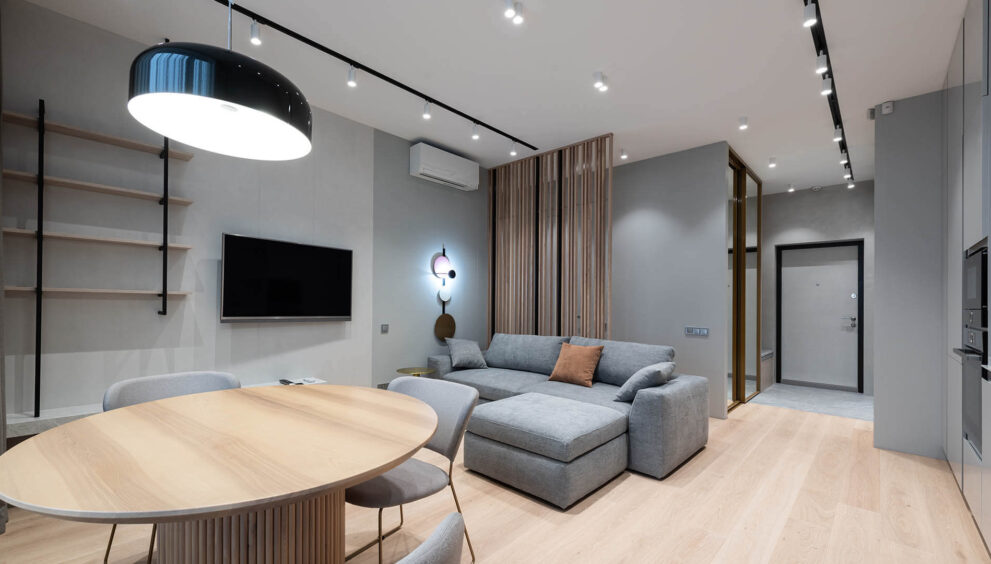Practical Tips to Trim Costs and Boost Profits in Your Interior Design Business

Running a successful interior design business requires a delicate balance between creativity and financial savvy. While your design skills may be impeccable, managing costs and optimizing profits are crucial aspects of sustaining your venture. In this article, we’ll explore six practical tips to help you trim unnecessary expenses and enhance your profits within your interior design business.
Strategic Vendor Partnerships:
Establishing strategic partnerships with vendors can significantly impact your bottom line. Reach out to suppliers such as suspended ceiling wholesalers and negotiate bulk discounts or preferred rates for materials you frequently use. By developing strong relationships with suppliers, you can gain access to exclusive deals and stay updated on promotions, ultimately lowering your material costs. Additionally, consider collaborating with local artisans or craftsmen who offer competitive prices for custom-made furniture or decor items. These partnerships not only help you cut costs but also provide unique and personalized design elements for your clients.
Efficient Resource Allocation:
One of the key ways to manage costs is by efficiently allocating resources. Start by creating a comprehensive inventory of the tools, equipment, and materials you currently possess. This inventory will prevent unnecessary repurchases and allow you to identify areas where you can make the most of existing resources. Regularly maintain and repair your equipment to extend its lifespan and avoid replacements. Moreover, you might want to think about integrating a project management solution to monitor the utilization of resources in every project. This approach can aid in recognizing any inefficiencies and empower you to arrive at well-informed choices concerning the allocation of resources in the times ahead.
Sustainable Design Practices:
Sustainable design is not only environmentally responsible but also financially beneficial. Integrating environmentally conscious materials and methods can lead to long-term cost savings. Opting for energy-efficient lighting, insulation, and appliances has the potential to decrease utility expenses for your clientele, adding to the appeal of your designs. Additionally, repurposing and upcycling furniture and decor items can give your projects a distinct charm while reducing the need for new purchases. Promoting sustainable design practices can also enhance your brand’s image and attract environmentally-conscious clients.
Streamlined Project Management:
Effective project management is a cornerstone of a profitable interior design business.
Use specialized software for project management to monitor project schedules, financial plans, and task lists. This approach enables you to detect potential budget overages and take corrective measures proactively, safeguarding your profitability. Regularly review project budgets and compare them against actual expenses. If you notice discrepancies, identify the causes and take corrective actions promptly. Communicate openly with clients about budget updates to manage their expectations and avoid misunderstandings.
Marketing and Branding:
Engaging in deliberate marketing and branding endeavors holds the potential to elevate your visibility and client interactions. Cultivate a robust digital footprint with a website that emphasizes user-friendliness and profiles on lively social media platforms. Exhibit your proficiency and captivate potential clients by sharing top-notch project images, endorsements from satisfied clients, and valuable design perspectives. Consider hosting workshops, webinars, or collaborating with local home improvement stores to offer design tips and insights to a wider audience. By positioning yourself as an authority in the field, you can command higher fees and attract clients who value your expertise.
Diversified Revenue Streams:
To further boost profits, explore diversified revenue streams within your interior design business. Offer additional services such as virtual design consultations, e-design packages, or even interior design courses for aspiring designers. These supplementary income sources can provide a consistent stream of revenue beyond traditional design projects.
Running a successful interior design business involves more than just creating stunning spaces; it requires a keen focus on financial management. By implementing these six practical tips – efficient resource allocation, strategic vendor partnerships, sustainable design practices, streamlined project management, effective marketing and branding, and diversified revenue streams – you can trim costs and enhance profits while maintaining the highest standards of design excellence. Balancing creativity with financial prudence is the key to long-term success in the dynamic world of interior design.


























































































































































































































































































































































































































































































































































































































































![Fixing [pii_email_aa0fea1a78a192ae7d0f] Microsoft Outlook Error](https://www.huffenpost.com/wp-content/uploads/2023/03/What-Causes-the.jpg)
![Fixing [pii_email_aa0fea1a78a192ae7d0f] Microsoft Outlook Error](https://www.huffenpost.com/wp-content/uploads/2023/03/How-to-fix-the-1-1024x1024.webp)
![Quick fixes for the [pii_email_dbd9dd084703ead3b9cf] Mail Error](https://www.huffenpost.com/wp-content/uploads/2023/03/How-to-Avoid-pii_email_b6b14f95f44a83737071-Outlook-Error-1024x576.jpg)
![How to fix the [pii_email_bbf95bff57a974a71da8] in Microsoft Outlook?](https://www.huffenpost.com/wp-content/uploads/2023/03/How-To-Solve-The-pii_email_9e750e335dfd9d75badb-Outlook-Error.webp)
![How to solve the [pii_email_b6b14f95f44a83737071] Outlook Error](https://www.huffenpost.com/wp-content/uploads/2023/03/How-to-Avoid-pii_email_b6b14f95f44a83737071-Outlook-Error.png)
![Ways to fix the "[pii_email_1fb861393abed78ab415] Error](https://www.huffenpost.com/wp-content/uploads/2023/03/pii_pn_56e685559f213991c933-Error-Causes-and-Solutions2.jpg)
![How to Fix the [pii_email_e2f55b4aa7bb667da6d9] Error](https://www.huffenpost.com/wp-content/uploads/2023/03/How-to-fix-the.webp)
![What Everyone Should Know About [pii_email_59ea919492dfc2762030]](https://www.huffenpost.com/wp-content/uploads/2023/03/pii_email_aa0fea1a78a192ae7d0f-Email-Error-and-Its-Solutions-1024x683.jpg)
![How to Fix the [pii_pn_5359771d15a46e7b88bf] Outlook Email Error](https://www.huffenpost.com/wp-content/uploads/2023/03/pii_email_57a4a2f20ec6813a8481-SMTP-Error-Solution-2.jpg)


























































































